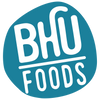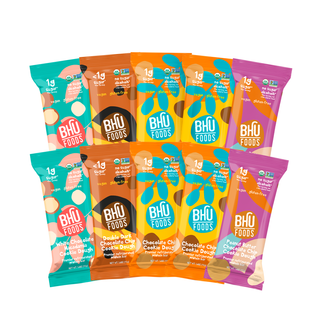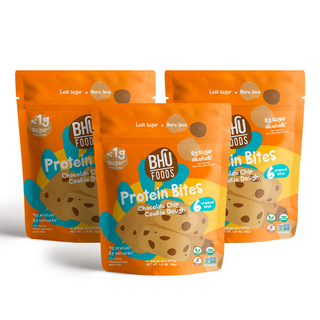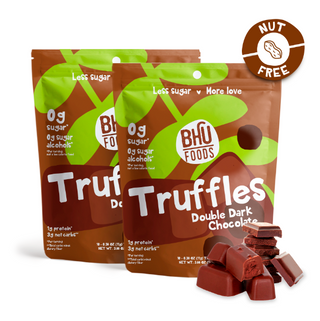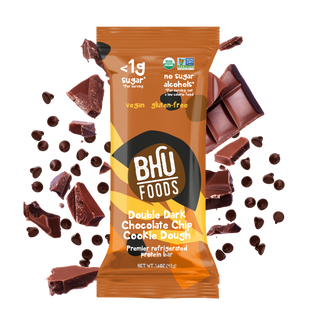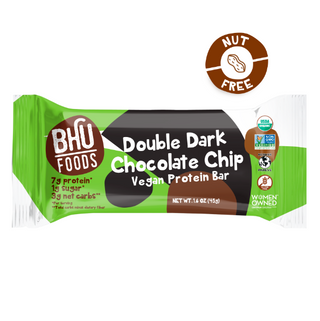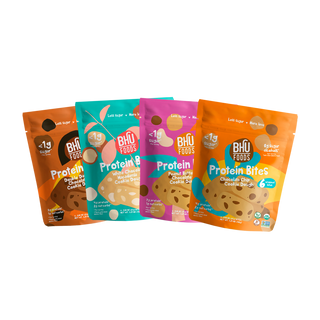
Do’s and Don'ts for the Kinds of Foods You Should be Snacking On
It’s not just about eating every two or three hours in the day for a strong, elevated metabolism and greater satiety and energy levels. You also need to consider the quality of the snacks you’re choosing too, since the nutrients it contains matter—you want to make sure you’re making the most of your snacks in the day to best serve your mood, energy and overall health.
Nutrients fuel your body and mind, and it’s common to get drowsy and lose energy as the day goes on, which is why regularly snacking on something small and nourishing can satisfy your appetite as well as your depleted nutrient supply.
Some nutrients are especially important, including the three macronutrients, also known as fiber, protein and healthy fats. Many other vitamins and minerals (a.k.a. micronutrients) work in tandem to affect your appetite regulation and hunger cues, digestion and regularity, gut health and immunity, mood and wellbeing, energy levels and performance, and lastly, your blood sugar.
Basically, those daily snacks matter a lot—and if your snacks, especially those consumed midday and around lunch, are nutrient dense with a wide variety in vitamins and minerals, they’ll benefit your health and body, to give you a more productive and happier second half of the day.
Plus, don’t forget that foods lacking in nutrients take up valuable space in your snacking repertoire and diet—with nothing to offer, and even worse, oftentimes with a hefty intake of refined carbohydrates, sodium, saturated fats and sugar. Talk about a midday snack backfiring, right? These are some helpful do’s and don'ts to follow when meal-prepping and planning your weekly snacks at home.
Don’t: Reach for Fattening, Salty Snacks or Fried Foods
Unhealthy snacks will spike blood sugar and deplete you of energy, and they’ll increase cravings for more unhealthy foods, too. Plus, you’ll also notice that after eating chips and greasy foods, like a veggie burger and fries from your favorite fast food restaurant, hunger levels increase in general, where you have the urge to grab a snack more often than you’re used to.
This decrease in both appetite regulation and suppression can also lead to weight gain over time, as well as increase your risk of heart disease, among other medical conditions, too. So, it’s possible for your snacks to not only leave you undernourished, but also can ruin your productivity for the day, by making you less focused and efficient, and even jeopardize your health and wellbeing long-term.
Don’t: Choose Something Sweet if it Lacks Nutrients
Consider the purpose of the snack and time of the day when preparing your lunch box or tossing snacks into your bag before leaving home in the morning too. Do you want to fill up on empty calories and increase blood sugar too high, where you become increasingly tired as the day goes on? Probably not.
Avoid snacking on sugary foods and baked goods, like donuts, cookies and pastries, which can lead to developing a nasty habit and this unfortunate pattern over time. (That is, unless the cookie happens to be a low-sugar, keto approved protein cookie, which is actually good for you and can also settle that sweet tooth.) Ditch unhealthy sweet snack foods and candies to avoid spiking blood sugar and experiencing that subsequent crash afterwards.
Do: Combine All Three Macronutrients for a Balanced Snack
Fiber, protein and healthy fat are three building blocks of a healthy snack, so you should make sure your prepared snacks contain all three, with the ratio varying depending on the time of day and need. For instance, if you’re eating a snack after a workout, you’ll likely need extra protein, whereas if you’re having a snack prior to exercise, protein, fiber and fat will be in smaller amounts to prevent GI distress, cramping and feeling too full and heavy during your workout.
Good examples of healthy macronutrient-rich foods include avocado, nuts and seeds, which have all three in one. Protein is easy to find in tofu, edamame, beans and legumes and nutritional yeast, while ancient or whole grains like quinoa, as well as fruits and vegetables have lots of fiber and antioxidant power. For some fat, nothing is easier than a drizzle of olive oil, which goes well on anything and can help you reach your fat requirements.
Do: Paint a Rainbow When Packing Your Daily Snacks
Don’t pack bland, white foods. Instead, choose brightly colored foods, as they contain not only fiber but also antioxidants. Examples include non-starchy vegetables with a high water content (great for filling you up on fewer calories and carbs, too!), like bell peppers, cucumbers and tomatoes, as well as green vegetables that are leafy or cruciferous, such as broccoli, brussels sprouts, asparagus, among others.
Low sugar fruits are good too, such as berries, lemon and watermelon, but just make sure to keep your sugar intake low, in general. Fruits and veggies have high antioxidant intake to better boost muscle recovery and nutrient absorption, especially in relation to plant based protein and iron. Plus, they also protect the heart and provide micronutrients too, as antioxidant-rich foods are generally naturally abundant in essential vitamins and minerals.
Do: Eat an Antioxidant-rich Post-Workout Recovery Snack
You might already know that eating about 15-30 grams of protein after a workout (with the number fluctuating, based on workout intensity, duration and performance level) matters, and should be combined with a bit of complex carbohydrate and a heavier dose of filling, heart-healthy fats for satiety, all within that 30-minute post-workout recovery window.
However, you also need antioxidants too, as they’re helpful in speeding recovery and maximizing use of that workout fuel. If you’re training that day, make sure that post-workout snack has some color. Antioxidants, found in colorful foods, fight oxidative stress released during exercise, which is damaging to muscle fibers and tissues.
Sadly, avoidance is inevitable, since oxidative stress is a necessary side effect that accompanies any workout, especially a challenging, high-intensity and successful one. Breakdown of your body’s muscles with exercise is actually helpful and provides long-lasting, as long as there’s a proper recovery plan in place—and one with a healthy, muscle-building snack to enjoy post-training.
Muscle damage signifies that your body’s been taxed in efforts and worked hard during the workout, and they can help you improve in performance and muscle mass, but only muscles can easily and quickly replenish lost nutrients, electrolytes and fluids (water in particular!), which left the body through sweat, to repair the damage, rebuild itself and even grow stronger.
This is similar to how aging with time and you get older is also impossible to prevent and reverse, but can be alleviated in how detrimental and fast-acting its effects are on the skin, body and overall health, based on lifestyle. And high-antioxidant intake is one way to lessen the appearance and effects of aging to slow down the process and ameliorate free radical exposure and harm.
